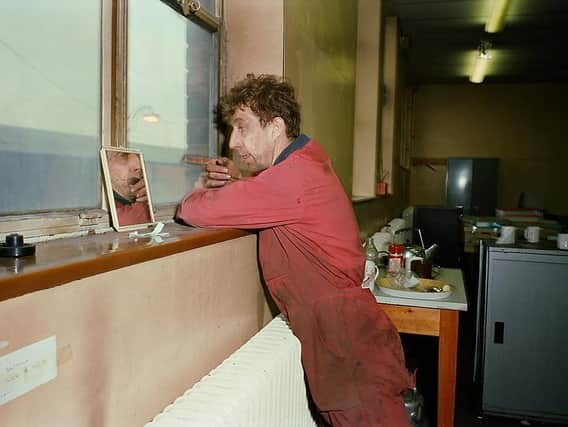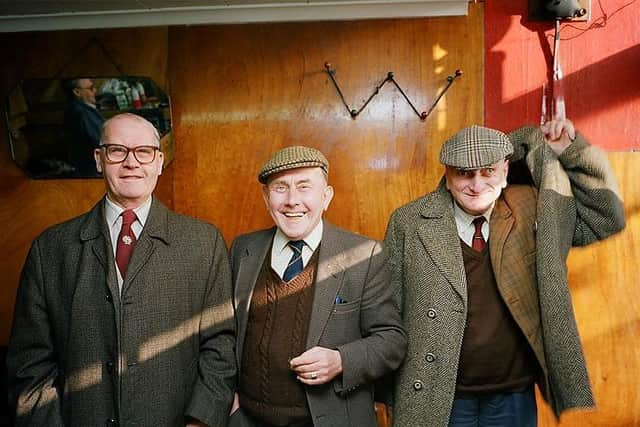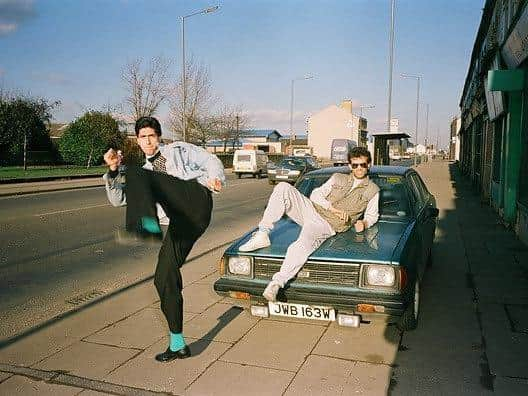The fascinating photos charting the changing life of Sheffield in 1980s


When John Darwell was commissioned by Sheffield’s Untitled Gallery to take pictures charting life in the city a little over three decades ago, the request came at a pivotal moment.
The steel industry had collapsed into severe decline, manufacturing sites had closed and – in a bid to revive the economy by regenerating vast swathes of empty land – Meadowhall shopping centre was gradually taking shape.
Advertisement
Hide AdAdvertisement
Hide Ad“I suppose at the time there was a degree of limbo,” says John, whose evocative pictures have been reprinted in a box set of books called Sheffield in Transition 1988-89. “Lots of places were standing empty and heavy industry, in a Thatcheresque environment, was pretty much on its knees.”


But he went further, too, by striking up a rapport with people living in Attercliffe and persuading them to appear in his pictures – such as a steelworker who found himself in the unsettling position of helping to demolish his old factory, members of a job creation scheme collecting rubbish from the land earmarked for Sheffield Arena, and the owners of small businesses who faced an uncertain future.
“I’d done projects on the Manchester Ship Canal, so I was very interested in the idea of tradition and community and how these things were gradually being wiped away to be replaced by whatever came next,” says John, who was born in Bolton.
“In Sheffield I was drawn to places like Attercliffe and the Don Valley – most of the buildings I photographed had compulsory purchase orders on them at the time. I was catching them before they disappeared. I was photographing Meadowhall while they were putting the dome on it.


Advertisement
Hide AdAdvertisement
Hide Ad"They had a helicopter dropping it into place – it’s totally emblematic of that move away from heavy industry to a more service-based economy. The irony, of course, is that it was all being done with steel.”
The Untitled Gallery, which began life in the Sheffield suburb of Walkley before moving to Brown Street in the city centre in 1988, specialised in photography and is now the Site Gallery, which has a broader remit than its predecessor.
John was one of several photographers tasked by the venue with making a visual record of the upheavals of the 1980s. An exhibition surveying the commissions, The Sheffield Project: Photographs of a Changing City, had been planned to start in May at Weston Park Museum, with John’s work featuring alongside pictures by the likes of John Davies, John Kippin and Anna Fox.
The show’s premise was that, despite being a bleak era of mass unemployment and economic unrest, it was also a time in which Sheffield began to imagine its future – a vision that included Meadowhall and the 1991 World Student Games.
Advertisement
Hide AdAdvertisement
Hide Ad“I’d wander round the Don Valley or one of the old factory units that were standing empty and being vandalised – I’d photograph what caught my eye and then in a more rigorous way I’d photograph the shops and stores along Attercliffe,” says John. “I’d work my way along the road, go in and explain what I was doing and asked if they’d mind if I took some photographs.”
One of his most arresting photos is an image of a young man – sporting garish teal-coloured socks – performing a kung fu kick while his sunglasses-wearing friend reclines on the bonnet of a hatchback as if it were a Ferrari. “He’s on Attercliffe Road,” says John. “I photographed all sorts – television repair shops, cafes, Asian markets... it felt like this big melting pot of a community that was on the verge of disappearing.”
Capturing these scenes took time and effort. “I’d be there for the best part of a day and quite often go back to show people what I’d done. I was quite happy to discuss the work with them. One guy didn’t want me to use pictures of his shop, for various reasons. That’s fine, people have the right to say no.”
The title of the box set – In Transition – has a personal resonance for John too. “Halfway through the project I stopped working in black and white,” he says. “They were the first colour photographs I’d ever taken, and I haven’t taken a black and white photo for 30-odd years now. It completely changed my sense of what I was doing in Sheffield. Instead of making it look slightly nostalgic, it brought it up to date and said ‘this is now’.”
Advertisement
Hide AdAdvertisement
Hide AdPreviously he had been resistant to the idea of switching from monochrome. “My heroes were all working in black and white, people like Robert Frank – it was just natural for me. There was a famous phrase that said ‘colour reveals but black and white describes’, which I would throw around with great abandon at the time but now don’t believe in at all. I think colour gives an immediacy to the work in some ways.”
Everything was shot on film, but today John is content with “a little digital camera”. “If I could shoot on film I would but it’s just too expensive.”
After his work in Sheffield was finished, John moved to Cumbria where he still lives today and works as a reader and associate professor in photography. His pictures have been exhibited in the Netherlands, Italy, the United States and Mexico, and are held in important collections including the Victoria & Albert Museum in London and New York’s Metropolitan Museum of Art.
After relocating, John found that his new Cumbrian home was close to Sellafield, the huge nuclear site that encompasses Calder Hall, the first atomic energy plant in the world to produce electricity for domestic use. Consequently, he developed a fascination with nuclear power.
Advertisement
Hide AdAdvertisement
Hide Ad“I went round the world photographing Hiroshima, Nagasaki, Three Mile Island and Chernobyl – I was one of the first photographers to work in there,” he says. “At Three Mile Island I just wandered around the outskirts and nobody batted an eyelid. I think if I was doing that now the security would have me on the floor in seconds. We’ve become a much more paranoid world.”
Travelling to these unusual destinations led to some illuminating discoveries. “People have a misconception that these nuclear sites all look like the beginning of Godzilla or something. Chernobyl is hugely overgrown, nature is reclaiming the place. The irony is, it’s open to tourism now – they have package holidays. I had to get permission to go into the zone, and I had an interpreter and driver with me at all times. My papers were checked regularly and there were armed guards on the gates.”
John was given a badge by the authorities that measured the amount of radiation he had been exposed to. “It’s a bit like the canaries down the mine,” he jokes. “But if you’ve been exposed, you’ve been exposed.”
He returned to Sheffield for the first time since the late 1980s last year to speak at a conference and found the city’s transformation “quite astounding”.
Advertisement
Hide AdAdvertisement
Hide Ad“I walked up from the railway station and didn’t have a clue where anything was. The streets had all changed, the station looked all new, rundown buildings had been replaced with hotels and nice pubs… nothing was familiar.”
Sheffield In Transition 1988-89 is published by Café Royal Books as a box set of five volumes, priced £45. Visit www.caferoyalbooks.com/shop/john-darwell-sheffield-in-transition-198889 for details.
Editor’s note: first and foremost - and rarely have I written down these words with more sincerity - I hope this finds you well.
Almost certainly you are here because you value the quality and the integrity of the journalism produced by The Yorkshire Post’s journalists - almost all of which live alongside you in Yorkshire, spending the wages they earn with Yorkshire businesses - who last year took this title to the industry watchdog’s Most Trusted Newspaper in Britain accolade.
Advertisement
Hide AdAdvertisement
Hide AdAnd that is why I must make an urgent request of you: as advertising revenue declines, your support becomes evermore crucial to the maintenance of the journalistic standards expected of The Yorkshire Post. If you can, safely, please buy a paper or take up a subscription. We want to continue to make you proud of Yorkshire’s National Newspaper but we are going to need your help.
Postal subscription copies can be ordered by calling 0330 4030066 or by emailing [email protected]. Vouchers, to be exchanged at retail sales outlets - our newsagents need you, too - can be subscribed to by contacting subscriptions on 0330 1235950 or by visiting www.localsubsplus.co.uk where you should select The Yorkshire Post from the list of titles available.
If you want to help right now, download our tablet app from the App / Play Stores. Every contribution you make helps to provide this county with the best regional journalism in the country.
Sincerely. Thank you.
James Mitchinson
Editor
